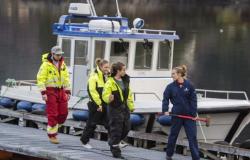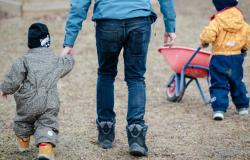You may have seen insect hotels and bird boxes around the parks at Gløshaugen. The homes are, among other things, part of the Grønne Gløs project, which was launched last year.
Martine Alexandra Andersen Hennig is a mediator in the project and works as a PhD student in nature restoration.
It was through application funds from Fremtidens campus from NTNU that led to the development of insect hotels and bird boxes. Grønne Gløs aims to give the park more life and make room for nature on campus. The aim is to give the insects places where they can thrive.
– We want to give the insects a place to live, something they lose during mowing, removing leaves and clearing the park.
The project began last year with hotels that were set up right after the summer. Hennig says that the project was carried out through a collaboration between design and architecture students. The students have set up both insect and bird habitats.
– We set up bird boxes well spread out in March this year. We work on the entire Gløshaugen campus, mainly around the Science Building. The 43 bird boxes are located mostly in the trees on the slope towards Rema 1000 Klæbuveien. All the boxes have pairs of birds living in them.
More space for nature
Grønne Gløs was established on the basis of NTNU’s goal of increased biological diversity in the Environmental Development Plan towards 2030. Budget and time priorities have mainly had an impact on the time the project was supposed to start.
– We needed to seek funds to be able to set up nature-friendly measures and create an insect hotel, bird boxes, a vegetable garden, two flower meadows and a pond.
Hennig talks about the project’s aim, which is to facilitate more life and more species in the parks around Gløshaugen.
– The bare lawns must give more space for nature, she believes.
Hennig explains that the hotels are not enough to help biodiversity, but that they are a starting point.

– With the help of monitoring and scientific research in collaboration with the Norwegian Institute for Natural Research (Nina), we get what can strengthen insect life.
ALSO READ: Young entrepreneurs who fight against the odds of fashion
Bee housing in the name of research
Senior engineer Sondre Dahle at Nina took the initiative to set up the bee hotels on the wall of the Nina building to breed a large population of horned mason bees in the area. He says that the purpose behind the bee hotels is to research the bees’ relationship with the hotels.
– We will test different housing for the bees, you can call them bee hotels.
Dahle says that Nina’s project with the bee hotels was started recently, three years ago.
– We have a need for better yields of fruit such as apples and pears. We therefore need to test whether insects, such as horned mason bees, are suitable for harsher weather conditions, says Dahle.
By setting up the hotels, he wants to investigate whether we get better pollination, but this is not the only reason:
– In addition to strengthening pollination, the expansion of the species is good for our own well-being, because they are sweet.
Dahle also says that the project is good for biodiversity as the bees get shelter. There are still not many species that are helped by the project.
– We are only looking at one species and it is not threatened.

Students can do this
Hennig says that there are many measures students can take to help the insects.
– There are many good resources online for how to make your own insect hotel. Please put the hotels in a sunny place. In addition, it is good for the insects if you avoid mowing parts of the lawn if you have a lawn. In addition, you can join Grønne Gløs as a volunteer and get involved in the measures we take, she explains.
With readily available and inexpensive items, students can also set up hotels for horned mason bees. Dahle says that the hotels are set up from thin pipes with a diameter of 8 to 10 and a length of 10 to 20 centimetres.
– You can make them yourself with cardboard straws from Burger King.
There are many different locations that can work when it comes to bee hotels. Even if you live high up, you can set up a hotel on the balcony.
– But it is important that they get heat from the sun during the day, says Dahle.
He goes on to say that the project has been going on for three years, with a growing number of bees.
– Last year we had a component of approximately 500 bees, he concludes.
Martine Alexandra Andersen Henning is a former journalist in Under Dusken.
ALSO READ: This is what new campuses look like









